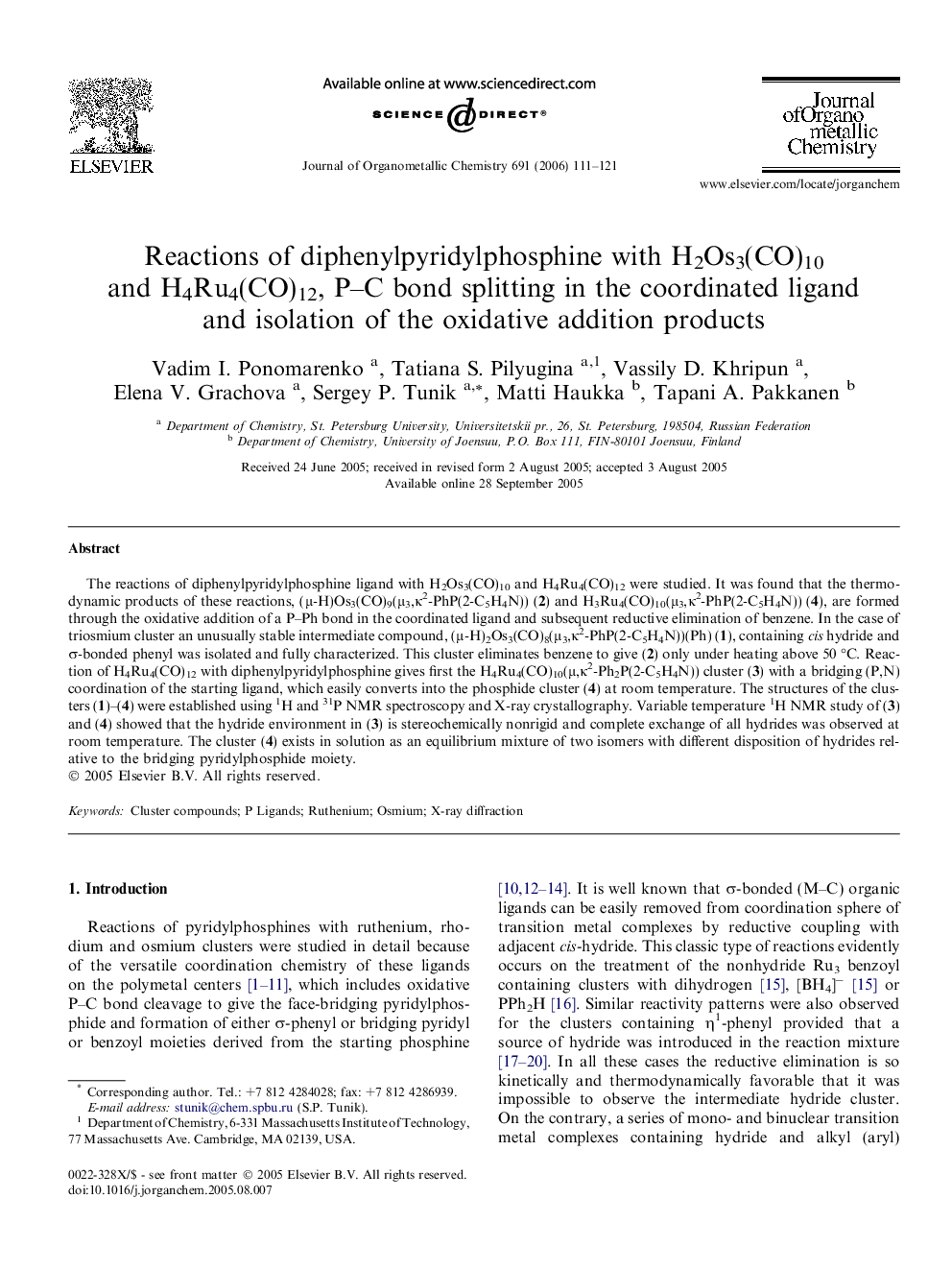| کد مقاله | کد نشریه | سال انتشار | مقاله انگلیسی | نسخه تمام متن |
|---|---|---|---|---|
| 1327721 | 1499951 | 2006 | 11 صفحه PDF | دانلود رایگان |

The reactions of diphenylpyridylphosphine ligand with H2Os3(CO)10 and H4Ru4(CO)12 were studied. It was found that the thermodynamic products of these reactions, (μ-H)Os3(CO)9(μ3,κ2-PhP(2-C5H4N)) (2) and H3Ru4(CO)10(μ3,κ2-PhP(2-C5H4N)) (4), are formed through the oxidative addition of a P–Ph bond in the coordinated ligand and subsequent reductive elimination of benzene. In the case of triosmium cluster an unusually stable intermediate compound, (μ-H)2Os3(CO)8(μ3,κ2-PhP(2-C5H4N))(Ph) (1), containing cis hydride and σ-bonded phenyl was isolated and fully characterized. This cluster eliminates benzene to give (2) only under heating above 50 °C. Reaction of H4Ru4(CO)12 with diphenylpyridylphosphine gives first the H4Ru4(CO)10(μ,κ2-Ph2P(2-C5H4N)) cluster (3) with a bridging (P,N) coordination of the starting ligand, which easily converts into the phosphide cluster (4) at room temperature. The structures of the clusters (1)–(4) were established using 1H and 31P NMR spectroscopy and X-ray crystallography. Variable temperature 1H NMR study of (3) and (4) showed that the hydride environment in (3) is stereochemically nonrigid and complete exchange of all hydrides was observed at room temperature. The cluster (4) exists in solution as an equilibrium mixture of two isomers with different disposition of hydrides relative to the bridging pyridylphosphide moiety.
Reactions of diphenylpyridylphosphine with H2Os3(CO)10 and H4Ru4(CO)12 afford the clusters containing face-bridging phoshide ligands through the sequence of oxidative addition–reductive elimination stages.Figure optionsDownload as PowerPoint slide
Journal: Journal of Organometallic Chemistry - Volume 691, Issues 1–2, 1 January 2006, Pages 111–121